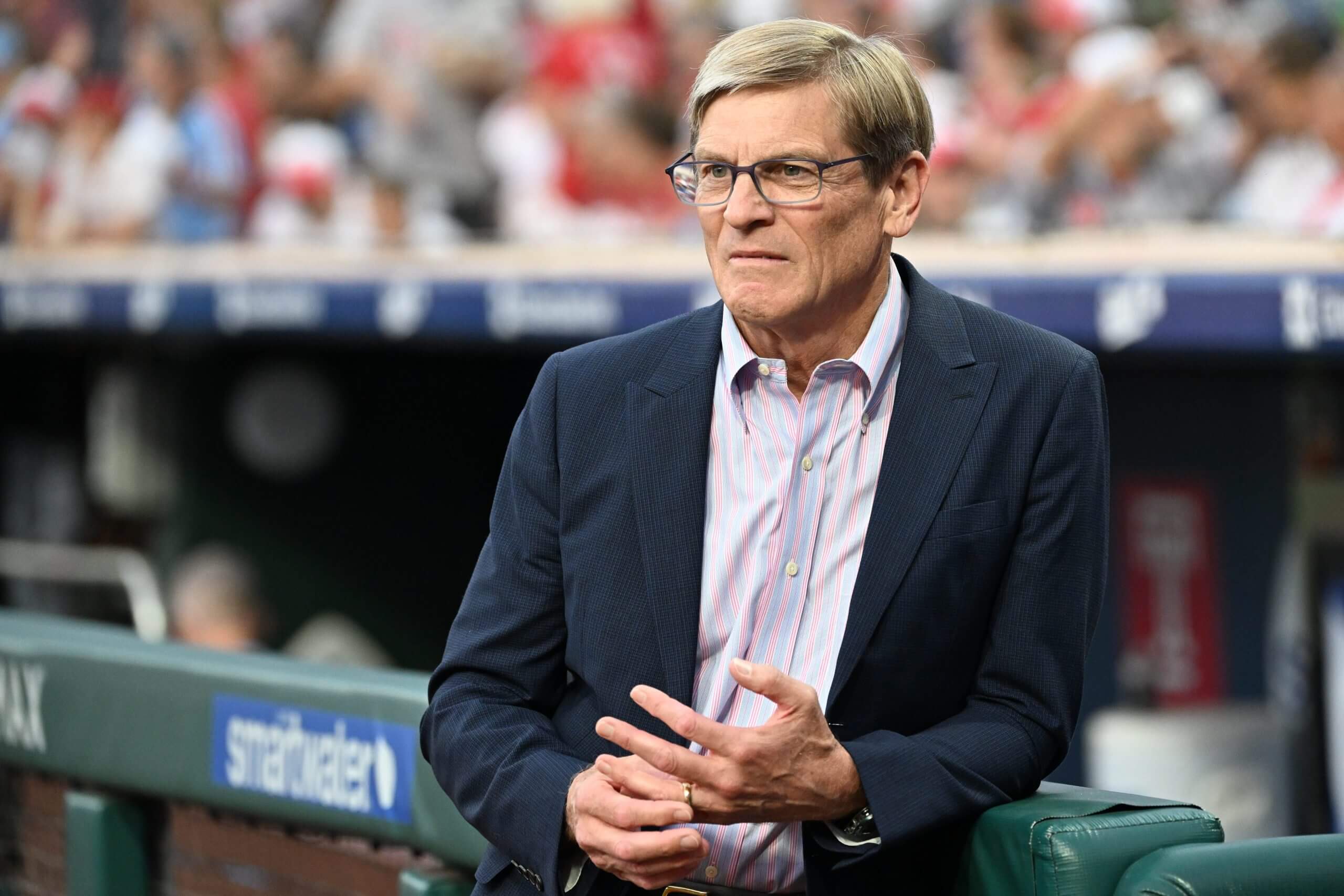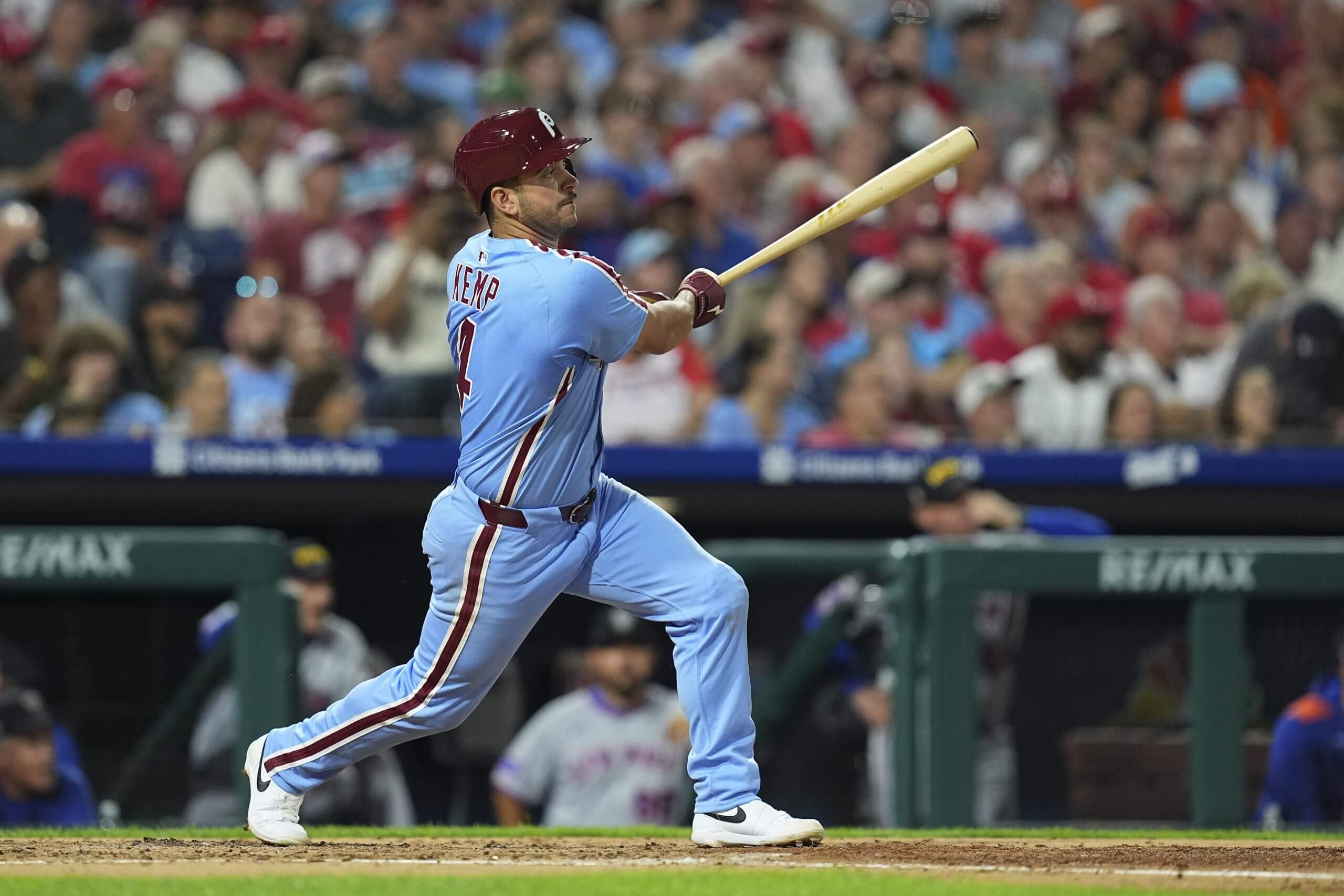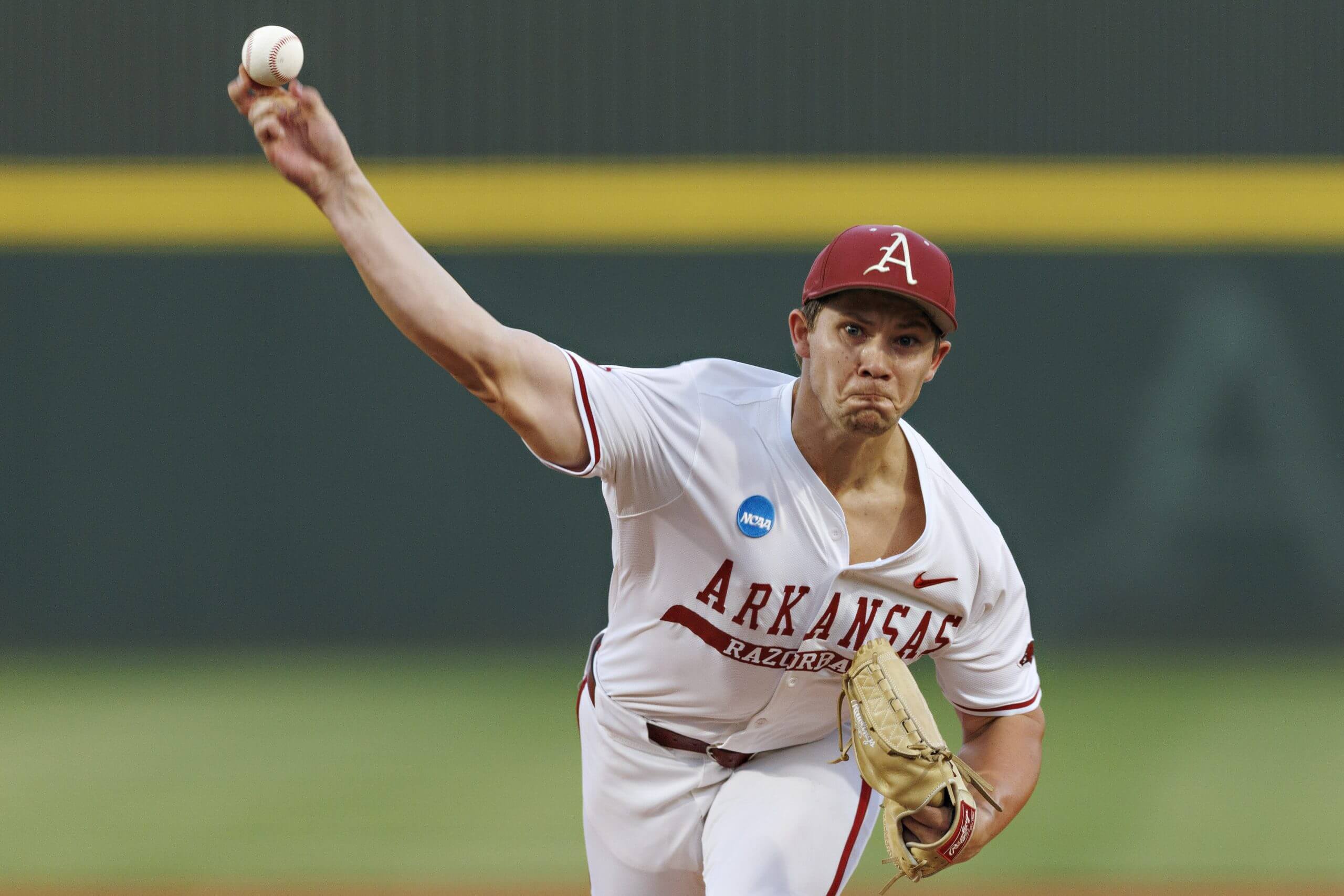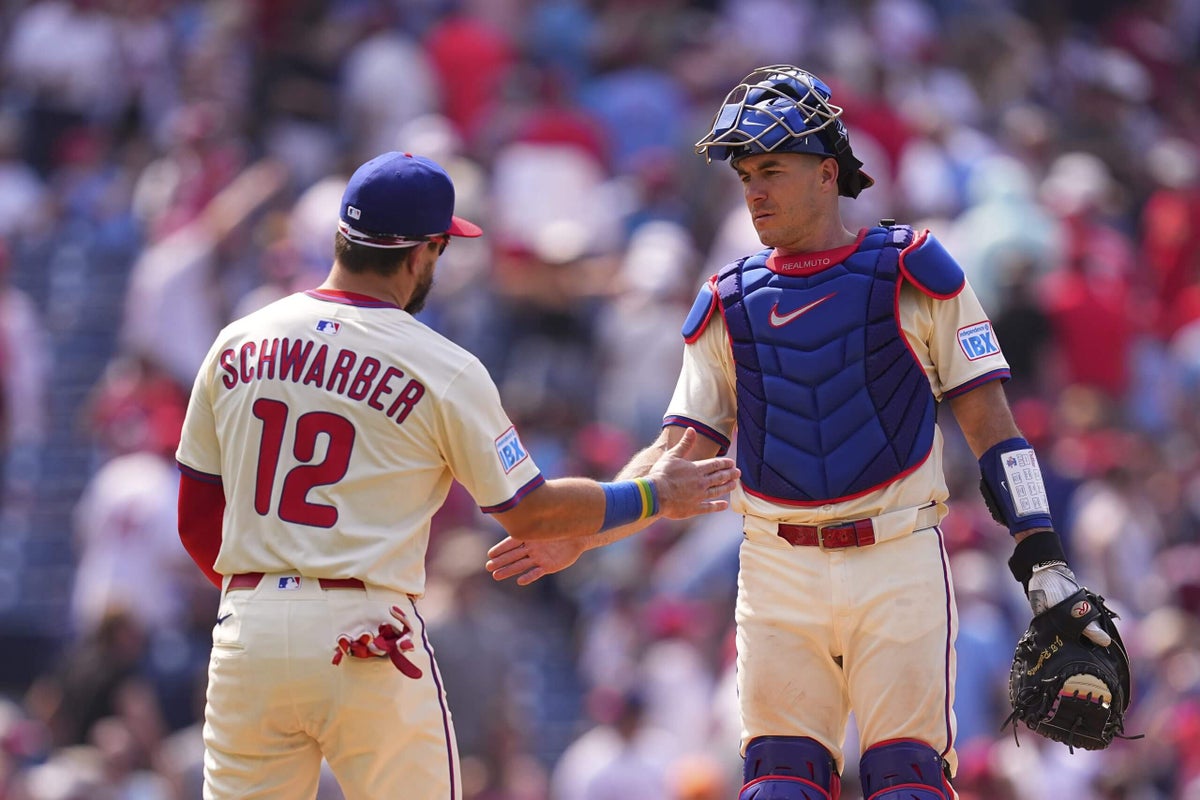This week, dozens of Phillies front-office employees will gather with scouts and coaches at the team’s Florida complex for annual organizational meetings. It’s the unofficial beginning of the offseason; the club will emerge with a clearer consensus after reviewing every player in the organization and potential external targets.
The official beginning is five days after the conclusion of the World Series, another one played without the Phillies involved.
The Phillies have yet to chart their ideal offseason course. Everyone has questions. Let’s attempt to answer some of yours.
Questions have been edited for clarity and length.
What do you think the start of the season payroll will be? Do you think it will be over or under the end-of-2025 season number? — Andrew R.
It’ll be similar to where 2025 landed, and perhaps a tick lower — at least to begin the season. The final payroll numbers haven’t been tallied yet, but various estimates show the Phillies around $313 million when calculated for luxury tax purposes. That represented, roughly, an 18 percent increase from the final 2024 payroll ($264 million). None of those figures includes tax. The Phillies’ tax bill in 2024 was $14.4 million. It’ll be somewhere close to $60 million in 2025.
So a conservative estimate would have the Phillies spending almost $100 million more on player payroll in 2025 (including tax) than they did in 2024. No one should expect a similar year-to-year increase from 2025 to 2026.
But there are factors at play. The biggest, perhaps, are potential changes to the sport’s financial structure beginning in 2027. There will be a new collective bargaining agreement (at some point). Assuming there is no salary cap in an eventual agreement, clubs can expect the luxury tax thresholds to rise because they have in every new basic agreement. The league is determined to centralize local TV revenues; that will affect clubs like the Phillies, who have one of the more favorable rights deals in baseball. So much is unknown.
In the Phillies’ case, they could view an especially large bill in 2026 as a necessary cost of doing business. They know $38 million is committed to Nick Castellanos and Taijuan Walker — two players who are expected to have reduced or no roles on the 2026 Phillies — which will be off the books for 2027.

Backed by principal owner John Middleton, the Phillies had the fourth highest player payroll this year. (Eric Hartline / Imagn Images)
Can the Phillies realistically take on salary beyond Kyle Schwarber and J.T. Realmuto to land a prized free-agent bat, while also making some trades and bringing up some of their top prospects to refresh the lineup and get younger? Any indication that they are going to truly spend the resources and money to retool and keep the core but make some significant lineup changes? — Andrew H.
My hunch is the final 2025 tally represented the Phillies being at or near their maximum payroll. And, well, it was fourth in MLB this past season. The Dodgers, Mets and Yankees were higher. The Phillies have attempted to spend their way out of various problems — the largest being the lack of a consistent pipeline from the minors — and I am not sure how much higher it can go.
So, as far as them landing a “prized free-agent bat” in addition to re-signing Schwarber and Realmuto … that is unlikely. Kyle Tucker sounds like a backup plan in the event Schwarber does not return. Even then, if he commands a $400 million deal, the Phillies might not have the fortitude.
Now, all of this said, the Phillies have resources that can be used better. Not counting Schwarber and Realmuto, they have almost $40 million in departing free agents. They dedicated $22.5 million to Max Kepler, Jordan Romano and Joe Ross last offseason, and that was not money well spent.
They can spend it smarter. It would surprise me if they do not trade someone from their big-league roster. But it’s hard to argue the Phillies have not truly spent the resources (prospects) and money to retool. Do they even need to retool? I don’t know.
Can you shut down these ridiculous Bryce Harper trade rumors? Is there any reason to think they are more than just baseless rumors? — Brendan B.
Stop listening to Philadelphia sports-talk radio.
Will the Phillies finally be able to add a right-handed bat to protect Harper? Who would be a likely reasonable solution? It’s been a problem for years, and it’s not Alec Bohm, Castellanos or Realmuto. — Patchen F.
The easiest place for the Phillies to do this would be in one of the corner outfield spots. Here are the best righty-hitting outfielders who will be free agents, listed in descending order by their 2025 fWAR: Miguel Andujar, Rob Refsnyder, Starling Marte, Ahmed Rosario, Tommy Pham and Austin Slater.
It’s not what you want.
The top six outfield free agents — Tucker, Cody Bellinger, Trent Grisham, Ryan O’Hearn, Mike Yastrzemski and Cedric Mullins — all bat left-handed.
If the Phillies find a middle-of-the-order right-handed hitter who plays the outfield, it will have to be through a trade. Also, a tall task.
How big of a role does Otto Kemp play next year? — Jeff C.

Some in the Phillies organization believe Otto Kemp has untapped upside. (Mitchell Leff / Getty Images)
It’s difficult to imagine the Phillies operating this offseason as though Kemp can be a productive, everyday player for them. His future role might be more of what he did in 2025 — start against lefties, fill in when needed on the corners. He was a replacement-level player as a rookie.
But some within the organization believe Kemp is an outlier, someone without pedigree (he was undrafted) who has untapped upside. Maybe that’s true; Kemp played a significant portion of 2025 with a fractured kneecap and an ailing shoulder. He hits the ball hard. He excelled at every level in the minors. Even if the Phillies were higher on Kemp than the rest of the industry, his lengthy injury history has to be a consideration. That alone might prevent him from being a regular.
He’s an interesting player. The Phillies have indicated they want to see more of Kemp because of that. Squint and maybe he’s … Davis Schneider?
Would it be unreasonable to say that the trade deadline was a huge missed opportunity to upgrade Weston Wilson’s spot on the postseason roster? I imagine the front office could’ve flipped a mid-level prospect for a righty corner outfielder who could hit better than Wilson (at the very least). Are there any targets for this spot who we should keep an eye on this offseason? — Declan M.
It’s not unreasonable; it should serve as a guide for this offseason. If the Phillies can move Brandon Marsh off center field and commit to him in one of the outfield corners, then it should be a priority to devote real attention (and resources) to acquiring a suitable platoon partner. Marsh is an imperfect player, but he would be most productive if deployed as the strong side of a corner outfield platoon. The perception of Marsh is worse than the reality because the Phillies have failed to find the right platoon partner. He’s shared time with Johan Rojas, Austin Hays and Wilson, among others, over the past few seasons.
All of this would be easier if Marsh were slotted in one of the corners; finding a complementary right-handed bat to platoon with him is easier there than in center field. The issue is …
Is there any consideration being given to having Justin Crawford learn on the fly in center field, or are the Phillies resigned to having him in left field? His lack of power makes him a less-than-ideal fit at a corner outfield spot unless they somehow find a center fielder with power. — Peter L.
That is a consideration, yes, and how comfortable the Phillies are with that idea could shape how they approach the outfield situation this offseason. There are mixed opinions — both inside and outside the organization — on Crawford’s defense in center. Everyone agrees it’s still raw. Crawford has significant upside there. And, in the modern game, teams are bringing players to the majors with much developing still to be done. So it would not be outlandish for the Phillies to acknowledge Crawford is an unfinished product in center, then hand him the majority of innings there.
But what happens if it doesn’t work? It’s easier to continue a player’s development in the majors when a team does not have championship aspirations. This is tricky because, as you noted, Crawford’s best fit is in center. That would allow the Phillies to pursue a little more power in traditional power spots — the corner outfield.
Are the Phillies considering Gage Wood as a starter or reliever? If the latter, is there a chance he is a fast riser and a late 2026 option? — Anonymous U.

The Phillies consider Gage Wood, their first-round pick this year, a starter — for now. (Wesley Hitt / Getty Images)
Starter. But he could factor into the 2026 second-half plans as either a starter or a reliever if the need arises. Or if Wood pitches his way into the picture. He turns 22 in December. The priority in 2026 will be building his innings; Wood pitched only 40 2/3 innings between college and pro ball in 2025. He was a reliever for much of his career at Arkansas.
All of that said, he could move fast.
Who are some bullpen arms they’ll look to add this offseason? I think they need to add about two more leverage arms to the bullpen for next year if Jhoan Duran, José Alvarado, Matt Strahm, and Orion Kerkering are returning. — Bobby G.
Add Tanner Banks to that list, and now you have five “leverage” guys. Do they move one of those pitchers and add a free agent to find a different mix? Every team will try to buy low on Devin Williams and Ryan Helsley; both of them should have better opportunities to pitch in the ninth inning than with Philadelphia.
The Phillies are in a different position this offseason; they don’t need a closer. They have him. Now, they need to create useful depth to protect against ineffectiveness or injuries to the current group of leverage arms. That can be the sole bullpen focus in the winter. It’s an area where they can grow.
Assuming the conventional wisdom was correct that the Phillies and Dodgers were the two best teams in the postseason this year, if the Dodgers had been an American League team and the Phillies ended up facing them not in the NLDS but in the World Series and lost in six games, would and should this team be viewed any differently when it comes to discussing how much of this roster needs to be remade? — Michael L.
Yes.
